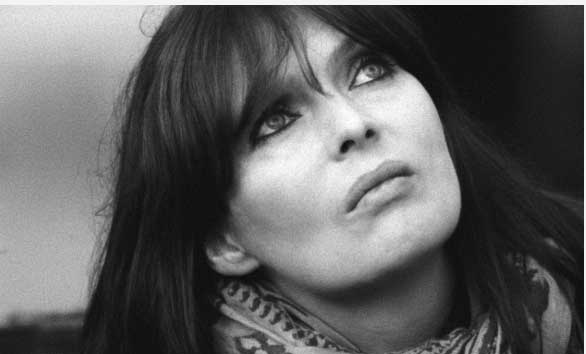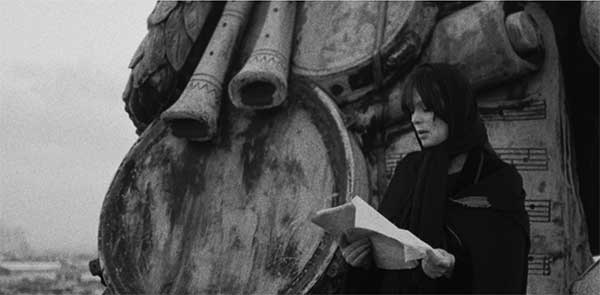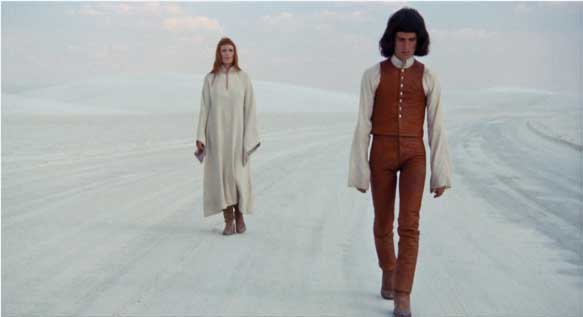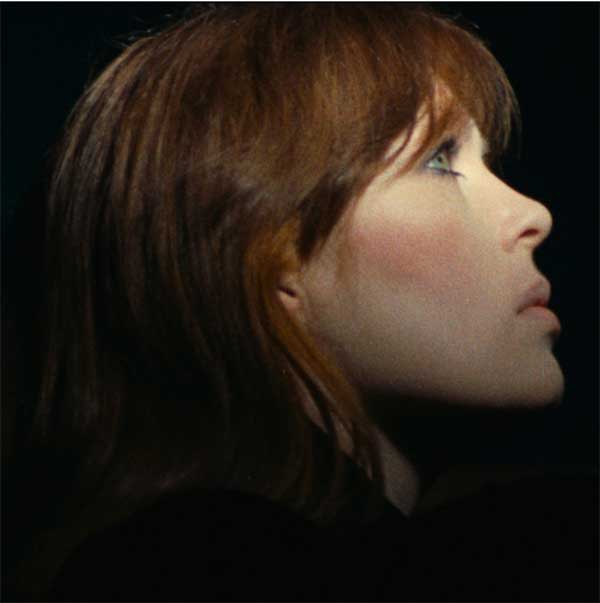
Le Coffret Nico, 5 films by Philippe Garrel
DVD/ Blu-Ray boxset, Re-Voir
www.re-voir.com
Hail Nico enduring, hail Nico forever becoming… Julian Cope, 2007.
Those of a certain age and with an interest in 1960s music emanating from the USA, will know the name Nico. She was famously the chanteuse added to the band The Velvet Underground when they were being managed by Andy Warhol in New York City.
Nico’s fame was partly due to her beauty (something that she later detested and changed her appearance to conceal it) as well as the string of famous lovers from that 1960s milieu. She had relationships with the likes of Jim Morrison, Bob Dylan, Brian Jones from The Rolling Stones, Jackson Browne and Lou Reed of The Velvet Underground. A veritable who’s who of the 1960s.
Born in Cologne, Germany in 1938, her birth name was Christa Päffgen, Nico’s European sensibilities, along with that of Lithuanian born filmmaker Jonas Mekas, brought an extra sheen of exoticness to Warhol’s Factory in New York. The European sensibilities of Mekas and Nico added something extra that would later be recognised as being at the forefront of the 1960s /70s American avant-garde movements in film and music
Nico, prior to turning up in NYC, appeared in Frederico Fellini’s La Dolce Vita in 1960 and later in 1965, she recorded and released a single for Rolling Stones manager Andrew Loog Oldham’s record label Immediate, a cover version of the Gordon Lightfoot song, ‘I’m Not Sayin’.
Nico released a trio of albums between 1967 and 1970. 1967’s Chelsea Girls featured songs written by the aforementioned friends and lovers, and which she later disowned. 1968’s The Marble Index considered her masterpiece by critics and fans alike was followed in 1970 by Desertshore which would feature in one of the films contained in the newly released box set.
The five films contained in the box set and directed by Phillipe Garrel are La Cicatrice Intérieure (The Inner Scar) (1970); Athanor (1972); Le Berceau de Cristal (The Crystal Cradle) (1975); Un Ange Passe (An Angel Passes By) (1975) and Le Bleu des Origines (The Blue of Origins) (1977). The films have all had the audio restored (aside from the silent films Les Bleu des Origines and Athanor) and the films have been visually restored.

Les Bleu des Origines which runs for 12 minutes (cut from an earlier, longer edit) feels like a long length music promotional video from the 1970s. Though it is silent and filmed in black and white, the mood of the film, with the exteriors shot in the Parisian winter, needs no soundtrack. Nico stands on the banks of the Seine, walks along a rooftop, writes a letter using a wall to lean on and through it all, 10 years on from the era of the famous Warhol ‘IT’ girl superstar Nico, appears icily beautiful. She appears alongside the actress Zou Zou, silent in attic rooms. An important cultural signifier appears in the form of a shot of a concert poster advertising a Nico show. Johnny Rotten, then as singer of the Sex Pistols was a prime thorn in the side of the British Establishment and the music industry is quoted at the foot of the poster: ‘Ever seen Nico? She’s wonderful. You really wanna die when you listen to her.’ No doubt Rotten is referring to The Marble Index which allegedly led the record’s producer Frazier Mohawk insisting on keeping the album short (in its original pressings it ran to 30 mins) as it was a way of keeping him away from the ‘despair’.
1972’s Athanor, a 20-minute silent film begins with a shot of Nico laying on a stone floor near a log on a plinth, putting this viewer in mind of a certain Lynchian TV show from the 1990s. The second shot is of Nico facing a wall, naked, her hair covering her shoulders. There is a narrative of sorts involving a crow, fire, and director Garrel. Nico has never looked more gothic, lounging naked in a castle. The downside to this film is its silence. I can see why Garrel looked over his shoulder to his predecessors in film and those masters of the silent era, enabling the viewer to solely experience the visual. But viewers who know Nico’s music will probably see this as a lost opportunity.
Un Ange Passe begins with a distanced sounding (it’s a live recording) Nico singing her classic song ‘Frozen Warnings’ while the camera catches her in black and white, staring heavenwards. As the live recording finishes, a solitary tear falls. There is a mysterious, as one would expect, feel to the film. The viewer is somewhat cast in the role of voyeur, even more than usual when watching a film, by witnessing Nico in a state of heightened vulnerability.

Le Berceau de Cristal will be of interest to the Nico completists out there. It’s never been released in a non-cinema edition before this box set. The film, celebrating its fiftieth anniversary with this release, features alongside Nico, another 1960s/70s ‘it’ girl, Anita Pallenberg. The film, soundtracked by Ash Ra Tempel begins with Nico reading and smoking a panetella. In her then trademark red-orange dyed hair, she icily stares past the book that she is holding. Shots of co-stars cut in, all against the spacey soundtrack. It’s calming and meditative.
Perhaps the biggest draw of the boxset, is La Cicatrice Intérieure. The film was shot over 2 years and consists solely of 21 sequenced shots. Most of Nico’s music fans will know the film by association. Her 1970 album Desertshore is the film’s partial soundtrack, as 5 songs feature. Stills from the film grace the Desertshore sleeve. The film is beautifully stark. Various desert locations in Egypt, America, Iceland and Italy are utilised in the film. The narrative such as it is, forms around drifting characters wandering in and out in dream like states. It’s hypnotic.
Garrel had noble intentions with La Cicatrice Intérieure. He saw the film as a way of visualising poetry. He said, ‘I was trying to make the ends of my shots rhyme: the colors and the patterns made by the actors onscreen.’ To an extent, it’s clear that there’s a methodology to the film. Nico, with the music that she brought to the film are central. As Jac Holzman, owner of Elektra records who issued The Marble Index said of Nico, ‘[she] was an apparition, a sprite with a spike, floating hazily in and out of focus.’ This is the essence of Nico in the films gathered in this box set.
Garrel and Nico were in a tumultuous relationship, living in squalor in Paris at the time of the shooting of La Cicatrice Intérieure. That the shooting of these films would have been difficult for those involved is not hard to imagine.
Re-Voir are to be applauded for not only re-issuing these important films but for the restoration work involved. Spending time with these films is a rewarding experience. Immerse oneself in their slow nature of the films, and relish in the company of the true icon that was Nico.
You will also witness the vision of a director unafraid to push the boundaries of what film can be: mythical, dreamlike and diaristic. This is something that built on the work of Jonas Mekas, a fellow Warhol Factory dweller, and whose paths crossed with Nico in her 1960s days in Manhattan.

.
Andrew Taylor
.
